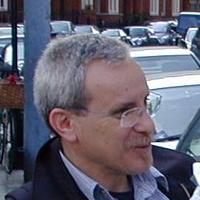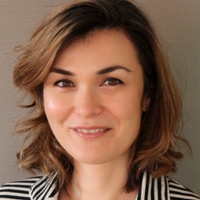
Kornelia Kajda
Related Authors
Κώστας Κωτσάκης
Aristotle University of Thessaloniki
Monique van den Dries
Universiteit Leiden
Eva Mol
University College London
Eva Parga-Dans
CSIC (Consejo Superior de Investigaciones Científicas-Spanish National Research Council)
Peggy Brunache
University of Glasgow
Tatjana Cvjeticanin
National Museum in Belgrade, Serbia
InterestsView All (25)










Uploads
Papers by Kornelia Kajda
tive research of difficult access areas. With no doubt, these, from the archaeological perspective, are forested areas. With the gradual advancement of researches applying LiDAR data, a need for further development of non-invasive techniques within forested areas has emerged. In this paper we present
a case study of an early mediaeval round fort from Biedrzychowice Dolne, Lubuskie Province. Te area was analyzed using of airborne laser scanning, aerial photography, electrical resistance and
magnetic survey. Te goal of this study aimed at understanding of the spatial structure of this place,
as well as at recognizing limitation of the applied research methods
Today, Czersk lies in the northern part of Poland, but before the outbreak of the Great War the region was part of Germany. After the first victories of the Kaiser's army over the Russians in August and September of 1914 in East Prussia, tens of thousands of Russian soldiers were taken prisoner.
archaeological] (Shanks 2012) w wieloraki sposób: ruiny, materialność, czas, trwanie oraz dziedzictwo to problemy do szpiku kości ważne i interesujące dla archeologa (ryc. 1). W
artykule pokrótce opisujemy te stanowiska archeologiczne z niedawnej przeszłości.
tive research of difficult access areas. With no doubt, these, from the archaeological perspective, are forested areas. With the gradual advancement of researches applying LiDAR data, a need for further development of non-invasive techniques within forested areas has emerged. In this paper we present
a case study of an early mediaeval round fort from Biedrzychowice Dolne, Lubuskie Province. Te area was analyzed using of airborne laser scanning, aerial photography, electrical resistance and
magnetic survey. Te goal of this study aimed at understanding of the spatial structure of this place,
as well as at recognizing limitation of the applied research methods
Today, Czersk lies in the northern part of Poland, but before the outbreak of the Great War the region was part of Germany. After the first victories of the Kaiser's army over the Russians in August and September of 1914 in East Prussia, tens of thousands of Russian soldiers were taken prisoner.
archaeological] (Shanks 2012) w wieloraki sposób: ruiny, materialność, czas, trwanie oraz dziedzictwo to problemy do szpiku kości ważne i interesujące dla archeologa (ryc. 1). W
artykule pokrótce opisujemy te stanowiska archeologiczne z niedawnej przeszłości.
First World War in Czersk (Poland) using ALS data and its derivatives. Till our prospection and use of ALS data this place has been unknown to a wider public, only cemetery, postcards and vary few historical documents remained.
People, things, animals and places are mutually constituted. When comes to leaving traces, people are not privileged. Animals leave traces too. Thus, in our paper we would like to present reflections on archaeology of animals from the perspective of aerial archaeology and human-animal studies. Remote sensing allows us to study the issues of how wild as well as domestic animals leave their traces behind, how they change and inhabit landscape, as well as, how they interact with humans in it.
Archaeological and remote sensing approach to the landscape enables us to understand places that we dwell not as assemblages of sites, but as assemblages of traces produced by people, animals, machines and their various mixes and hybrids. We should be open to any entities that may participate in a world we dwell. Only when multiplicity of things is included, landscapes become pluralistic, relevant and democratic. This point of view not only reconstitutes our approach towards landscape and its perception but it also provokes new questions towards heritage management.